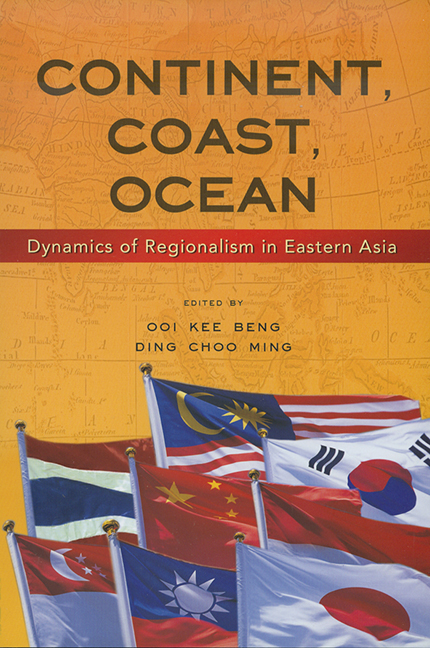Book contents
- Frontmatter
- Contents
- Foreword by Shamsul A.B.
- Contributors
- Introduction
- PART ONE PUTTING JAPANESE IMPERIAL HISTORY TO REST
- 1 The Success of Japan's Multi-Directional Diplomacy in Modern Times
- 2 War Memories and Japan's Relations with East Asian Countries
- PART TWO THE ECONOMICS OF REGIONAL INTEGRATION
- PART THREE INTER-REGIONALISM AND REGIONALISM
- PART FOUR NEW KNOWLEDGE, NEW PROBLEMS, NEW SOLUTIONS
- Index
1 - The Success of Japan's Multi-Directional Diplomacy in Modern Times
from PART ONE - PUTTING JAPANESE IMPERIAL HISTORY TO REST
Published online by Cambridge University Press: 21 October 2015
- Frontmatter
- Contents
- Foreword by Shamsul A.B.
- Contributors
- Introduction
- PART ONE PUTTING JAPANESE IMPERIAL HISTORY TO REST
- 1 The Success of Japan's Multi-Directional Diplomacy in Modern Times
- 2 War Memories and Japan's Relations with East Asian Countries
- PART TWO THE ECONOMICS OF REGIONAL INTEGRATION
- PART THREE INTER-REGIONALISM AND REGIONALISM
- PART FOUR NEW KNOWLEDGE, NEW PROBLEMS, NEW SOLUTIONS
- Index
Summary
PART I
Japan's diplomacy of international conciliation can be traced back to the latter years of the Shogunate. Japanese cooperation with Western Powers began in 1853 when, under the threat of Commodore Perry's “Black Ships”, Japan concluded unequal treaties with the United States. The Treaty of Kanawa was signed in 1854, to be followed by the U.S.-Japanese Commercial Treaty in 1858. It also concluded unequal treaties with Holland, Britain, Russia, France, Portugal, Germany, Sweden, Belgium, Italy and Denmark.
Although these treaties were qualified by terms such as “good-will” or “commercial”, their actual contents concerned: (1) opening ports for trade; (2) extra-territorial jurisdiction; (3) negotiating a customs-tax rate; and (4) granting of most favoured nation status, etc. These very treaties marked the beginning of the so-called “humiliation diplomacy”. The Meiji restoration was carried out under the concept of “Sonno Joyi” (Reverence for the emperor and expulsion of the barbarians). Nevertheless, the Meiji government was wont to take over the unequal treaties, signed by the Bakufu in submission to the foreigners.
It is said that the representatives of Britain and France were very active in pursuing economic interests in Japan behind the scenes of the Meiji restoration. British envoy Harry Smith Parkes supported Satsuma-Choshu in overthrowing the Bakufu, while French envoy Leon Roches stood by the Tokugawa Shogunate. Thus, it may be said, the outcome of the Meiji restoration was Britain's diplomatic victory over France. Accordingly, Japan was in a position to appease Britain after the Meiji restoration. In 1871, Iwakura Tomomi was selected to head a special mission composed of more than one hundred powerful Meiji government officials including Kido Koin, Okubo Toshimichi, and Ito Hirobumi, to mention but a few. Their aim was to have negotiations with the Western powers concerning the revision of the unequal treaties.
However, Iwakura's group was disappointed by the cold reaction of the Western powers to their treaty revision proposals. They had no choice but to alter the purpose of their mission and embark upon a tour of America and Europe to study Western civilization. Iwakura and his companions came to realize that Japan had lots to learn about bunmei kaika (civilization enlightenment) and fukoku kyohei (rich country, strong army) before she could rank among the Western powers.
- Type
- Chapter
- Information
- Continent, Coast, OceanDynamics of Regionalism in Eastern Asia, pp. 3 - 26Publisher: ISEAS–Yusof Ishak InstitutePrint publication year: 2007



